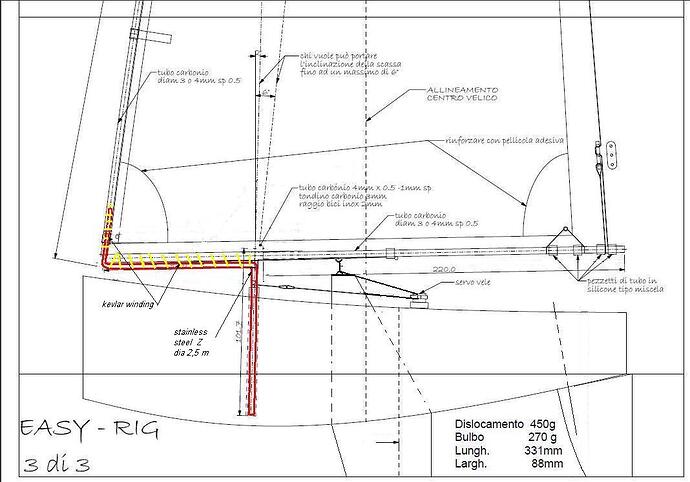Hello to all.
As promised to my friend Thomas (of IFCA) will also present here our Italian development project Easy Footy.
After Footy Gold Cup 2012 in Sestriere was very impressed by the excellent performance of the Phil Tyler boat that arrives at the 4th final place.

Studying the pictures taken and the info that Phil had posted on that forum was very easy to understand that the boat was essential, simple and very easy to build.
In Italy, and not only, there is lacks of young people who are dedicated to RC sailing and I got the idea to create a track easy to follow to realize a boat very cheap in a few nights and with very little equipment.
The depron material is a very well-known among young model airplane flying with indoor and lends itself to create small boats (as long as there is a good structural design as a starting point), it is waterproof and does not need to be painted to stay in “water”.
For the general conception so I started the project Easy Sail of which you see the presentation on my site here: www.progetto-urca.com/urca/progettando/Easy_RC/index.htm. in my web page there are also links to the Italian Forum of the Barone Rosso and the log building complete construction drawings with which is was made in many copies.
For forms and position of sails and appendages instead I followed in principle the Phil Tyler boat.
We have made any prototypes and we are now at the final definition of the project and my friend Camillo Giammarco is transferring everything on beautiful drawings cad.
Here a preview of draft copy

The main parameters are:
Boat not extremely diagonal with an overall length of about 32 cm
displacement between 450 and 500 grams
bulb weight between 270 and 300 grams
Main sail area to the rig: 13.5 to 14 dm2
Now a couple of prototypes and sail plan optimizations were introduced in the drawings of this final version.
In each part conception the main goal is to maintain the principle of “take it easy” and making every part easily and with the minimum of equipment.
In the next post I will explain the construction sequences and put online the construction drawings to build this boat that probably in the future could become a simple short kit to be assembled.

To be continued…
Greetings











































